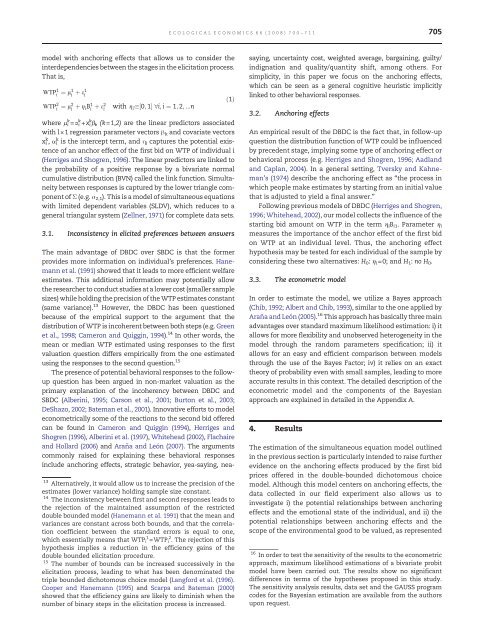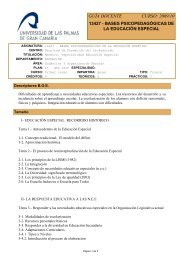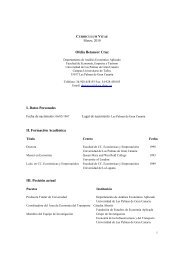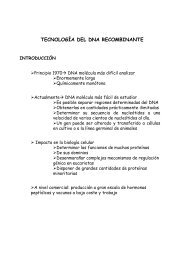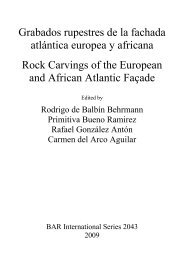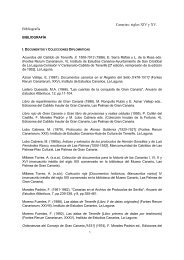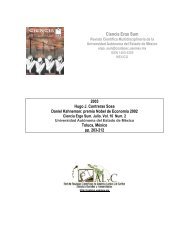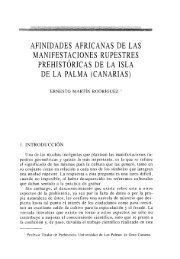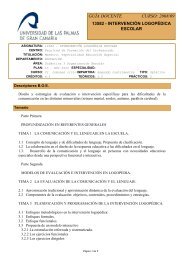Do emotions matter? Coherent preferences under anchoring and ...
Do emotions matter? Coherent preferences under anchoring and ...
Do emotions matter? Coherent preferences under anchoring and ...
Create successful ePaper yourself
Turn your PDF publications into a flip-book with our unique Google optimized e-Paper software.
ECOLOGICAL ECONOMICS 66 (2008) 700– 711705model with <strong>anchoring</strong> effects that allows us to consider theinterdependencies between the stages in the elicitation process.That is,WTP 1 i¼ A 1 iþ e 1 iWTP 2 i¼ A 2 iþ g i B 1 iþ e 2 iwith g i a½0; 1Š 8i; i ¼ 1; 2;:::nwhere μ i k =α i k +x i k β k (k=1,2) are the linear predictors associatedwith l×1 regression parameter vectors β k <strong>and</strong> covariate vectorsx i k , α i k is the intercept term, <strong>and</strong> η i captures the potential existenceof an anchor effect of the first bid on WTP of individual i(Herriges <strong>and</strong> Shogren, 1996). The linear predictors are linked tothe probability of a positive response by a bivariate normalcumulative distribution (BVN) called the link function. Simultaneitybetween responses is captured by the lower triangle componentof Σ (e.g. σ 2,1 ). This is a model of simultaneous equationswith limited dependent variables (SLDV), which reduces to ageneral triangular system (Zellner, 1971) for complete data sets.3.1. Inconsistency in elicited <strong>preferences</strong> between answers13 Alternatively, it would allow us to increase the precision of theestimates (lower variance) holding sample size constant.14 The inconsistency between first <strong>and</strong> second responses leads tothe rejection of the maintained assumption of the restricteddouble bounded model (Hanemann et al. 1991) that the mean <strong>and</strong>variances are constant across both bounds, <strong>and</strong> that the correlationcoefficient between the st<strong>and</strong>ard errors is equal to one,which essentially means that WTP i 1 =WTP i 2 . The rejection of thishypothesis implies a reduction in the efficiency gains of thedouble bounded elicitation procedure.15 The number of bounds can be increased successively in theelicitation process, leading to what has been denominated thetriple bounded dichotomous choice model (Langford et al. (1996).Cooper <strong>and</strong> Hanemann (1995) <strong>and</strong> Scarpa <strong>and</strong> Bateman (2000)showed that the efficiency gains are likely to diminish when thenumber of binary steps in the elicitation process is increased.ð1ÞThe main advantage of DBDC over SBDC is that the formerprovides more information on individual's <strong>preferences</strong>. Hanemannet al. (1991) showed that it leads to more efficient welfareestimates. This additional information may potentially allowthe researcher to conduct studies at a lower cost (smaller samplesizes) while holding the precision of the WTP estimates constant(same variance). 13 However, the DBDC has been questionedbecause of the empirical support to the argument that thedistribution of WTP is incoherent between both steps (e.g. Greenet al., 1998; Cameron <strong>and</strong> Quiggin, 1994). 14 In other words, themean or median WTP estimated using responses to the firstvaluation question differs empirically from the one estimatedusing the responses to the second question. 15The presence of potential behavioral responses to the followupquestion has been argued in non-market valuation as theprimary explanation of the incoherency between DBDC <strong>and</strong>SBDC (Alberini, 1995; Carson et al., 2001; Burton et al., 2003;DeShazo, 2002; Bateman et al., 2001). Innovative efforts to modeleconometrically some of the reactions to the second bid offeredcan be found in Cameron <strong>and</strong> Quiggin (1994), Herriges <strong>and</strong>Shogren (1996), Alberini et al. (1997), Whitehead (2002), Flachaire<strong>and</strong> Hollard (2006) <strong>and</strong> Araña <strong>and</strong> León (2007). Theargumentscommonly raised for explaining these behavioral responsesinclude <strong>anchoring</strong> effects, strategic behavior, yea-saying, neasaying,uncertainty cost, weighted average, bargaining, guilty/indignation <strong>and</strong> quality/quantity shift, among others. Forsimplicity, in this paper we focus on the <strong>anchoring</strong> effects,which can be seen as a general cognitive heuristic implicitlylinked to other behavioral responses.3.2. Anchoring effectsAn empirical result of the DBDC is the fact that, in follow-upquestion the distribution function of WTP could be influencedby precedent stage, implying some type of <strong>anchoring</strong> effect orbehavioral process (e.g. Herriges <strong>and</strong> Shogren, 1996; Aadl<strong>and</strong><strong>and</strong> Caplan, 2004). In a general setting, Tversky <strong>and</strong> Kahneman's(1974) describe the <strong>anchoring</strong> effect as “the process inwhich people make estimates by starting from an initial valuethat is adjusted to yield a final answer.”Following previous models of DBDC (Herriges <strong>and</strong> Shogren,1996; Whitehead, 2002), our model collects the influence of thestarting bid amount on WTP in the term η i B i1 . Parameter η imeasures the importance of the anchor effect of the first bidon WTP at an individual level. Thus, the <strong>anchoring</strong> effecthypothesis may be tested for each individual of the sample byconsidering these two alternatives: H 0 : η i =0; <strong>and</strong> H 1 : no H 0 .3.3. The econometric modelIn order to estimate the model, we utilize a Bayes approach(Chib, 1992; Albert <strong>and</strong> Chib, 1993), similar to the one applied byAraña <strong>and</strong> León (2005). 16 This approach has basically three mainadvantages over st<strong>and</strong>ard maximum likelihood estimation: i) itallows for more flexibility <strong>and</strong> unobserved heterogeneity in themodel through the r<strong>and</strong>om parameters specification; ii) itallows for an easy <strong>and</strong> efficient comparison between modelsthrough the use of the Bayes Factor; iv) it relies on an exacttheory of probability even with small samples, leading to moreaccurate results in this context. The detailed description of theeconometric model <strong>and</strong> the components of the Bayesianapproach are explained in detailed in the Appendix A.4. ResultsThe estimation of the simultaneous equation model outlinedin the previous section is particularly intended to raise furtherevidence on the <strong>anchoring</strong> effects produced by the first bidprices offered in the double-bounded dichotomous choicemodel. Although this model centers on <strong>anchoring</strong> effects, thedata collected in our field experiment also allows us toinvestigate i) the potential relationships between <strong>anchoring</strong>effects <strong>and</strong> the emotional state of the individual, <strong>and</strong> ii) thepotential relationships between <strong>anchoring</strong> effects <strong>and</strong> thescope of the environmental good to be valued, as represented16 In order to test the sensitivity of the results to the econometricapproach, maximum likelihood estimations of a bivariate probitmodel have been carried out. The results show no significantdifferences in terms of the hypotheses proposed in this study.The sensitivity analysis results, data set <strong>and</strong> the GAUSS programcodes for the Bayesian estimation are available from the authorsupon request.


